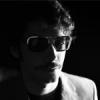-
Posts
153 -
Joined
-
Last visited
Profile Information
-
Occupation
Digital Image Technician
-
Location
London, UK
Contact Methods
-
Website URL
http://www.4klondon.com/technicians/john-miguel-king/
Recent Profile Visitors
-

Sony A7S - LED light banding and flickering?
John Miguel King replied to CRISTINA WOLF's topic in Lighting for Film & Video
The A7s has very serious rolling shutter issues. It's even worst than the 5d. Bang a long lens (say an 80mm) and rock the camera ever so slightly. You'll see how jello everything turns. This affects banding, as it's just another symptom of the same disease. There's also the issue of Pulse Width Modulation being the de facto dimming approach with leds. Cheap dimmers work at such low frequencies that banding will happen regardless. In order to eliminate PWM as one of the causes the dimmer should be working at 1 khz or faster. Kinos, for example, work at 10 khz. The correct approach, if going led, would be using an RGB led matrix through an Arduino controller. This way you can create any color effect you wish whilst working at a very high frequency. -
Robyn, I wrote "all digital cameras with high dynamic range". I did not write "all digital cameras have high dynamic range". :P Very telling graph you've attached. As to rating one stop lower, this comes straight from the horse's mouth, aka, Sony itself. Here in London we've the Digital Motion Picture Centre. The dudes there know their cameras and will happily show you a variety of footage on their rec 2020 monitor. It is the closest to a life changing experience... as far as learning about exposure can change a life. All changes of ISO (which, as you point out, should be called EI) in a digital sensor are just tweaks in the gain. The sensor does not change. All one is doing is moving across a Dynamic Range to Highlight protection. Physics is to blame for this. The less light that is being reflected, the less saturation that is recorded. This is why, for clean and saturated shadows, which to me marks a good exposure, that extra stop makes a world of a difference. On the sgamut3, I agree 200%. There's this insistence on not using LUTs that I have found on some colourists. There's no way a lift-gamma-gain tweak can achieve the same skintones as a LUT. It's a very complex transform that Sony's engineers have sweated over to reach perfection. I find it bit on the stubborn side to insist on ignoring the implications of recording to such a huge colour gamut.
-
Coming back to this after a while. Do not be too concerned about overexposing. As a rule of thumb rate all digital cameras with high dynamic range (14 stops is hdr) about a stop slower than nominal ISO. This is due to the way in which colour information is captured across the different stops. Imagine an inverted drop, with the thin side being shadows and the drop itself being the highlights. There will always be more colour in the highlights. It's the underexposing, trusting the nominal iso, that leads to noise and quasi-monochrome colour in the shadows. Basically the day rec 2020 becomes the norm, not that far off, a lot of films that have been underexposed will look pretty bad on these screens. Funny thing, this is how film has been exposed since the invention of the art form. It's called a "thick negative". As to clipping, clipping isn't bad nor ugly as long as it's happening where it should be happening. One needs dynamic contrast in pictures. If you've got the sun in frame, the sun must clip. There's no way around this fact.
-

Copying cards with byte compaire
John Miguel King replied to Ben Edwards's topic in Camera Assistant / DIT & Gear
The best is Silverstack. Second best is YoyottaId. These two are the only ones maintaining a library with rich metadata and reporting capabilities. Silverstack has great, I repeat, great support. I've asked for implementations and seen them appear in the next release. If you spot an issue, they might even make a release the next day with a bug fix. It's also a great QC tool. YoyottaId ain't bad. But what with the absence of an actual user manual, I seriously can't be bothered to spend my days performing voodoo magic until I hit the right combination. Then there's, as mentioned, ShotPutPro. I find it a bit too much on the bare side. It does the copy just fine. So if this is the only thing you need, I see no reason not to use it. As for free there are great tools hiding in the terminal. Rsync is simply fantastic. It'll create a checksum if you ask for it. And it uses checksums even when you don't ask for it. I use it for cloning entire projects onto a safe server and/or LTO, or for copying other elements of a day's folder that do not require reporting, such as dailies, sound, ALE, grades, etc, etc. Another great little tool is iSFV. It doesn't do the copy, but it creates checksums for entire folders which are then simple to verify. It uses the CRC checksum. It's a smaller checksum, but it is enough indeed. I send it to edit assistants so they can easily compare the quality of the cloning they're doing in the cutting room. File size comparison won't show any errors at a byte level, so it's basically a waste of time. Likewise with doing two copies with two readers to two different destinations. As long as you are calculating the checksum off the source, then comparing that to the cloned copies you are basically fine, and can then move on to the actual DIT work. -

How many does a year do you shoot
John Miguel King replied to Albion Hockney's topic in General Discussion
Over the last three years I did on average 16 - 20 weeks a year as DIT on features, dramas and commercials. Then something like 3 weeks a year as DOP. It's just impossible (for very good reasons, I think) to start off as DOP and make a living. It's maybe a notch easier for those coming straight off the top films schools. The reason: there are more experienced DOPs around that will deservedly take the well paid jobs. Honestly, nothing beats learning from the masters. Cinematography is a craft first and foremost. I see no reason why the progression to DP should be any different from that of becoming a master builder. x -

ARRI Master Anamorphic Flare Sets
John Miguel King replied to Tim Tyler's topic in Lenses & Lens Accessories
Magnificent glass with or without the flare elements. I worked with the standard version a couple of weeks ago. They come straight from awesomeness-Valhalla. -

The role of L.E.D lighting in filmmaking
John Miguel King replied to Aaron Takhar's topic in General Discussion
Chris, there is a big difference between cheap LEDs and actual, branded, professional quality LEDs. The later have become standard issue in all productions, mostly in the higher end of the spectrum. I've seen them in big brand commercials, prestige BBC dramas and features that most definitely qualify as big budget in UK terms. I've seen them on location, on exteriors and on sound stages. I have yet to hear anything other than "this is amazing!" on such sets. Very often they aren't even replacing previous technologies. They allow for setups that are essentially impossible with any other technology. I don't know what you mean by "gamma correction", Aaron?. You mean colour correction? Gamma belongs to a totally different conversation. ;)- 13 replies
-
- L.E.D lighting
- lighting
- (and 4 more)
-

The role of L.E.D lighting in filmmaking
John Miguel King replied to Aaron Takhar's topic in General Discussion
LEDs are already quite important. The industry embraced Celeb Flos immediately, and luminaires such as Rosco litepads & litepanels have no real competition on multiple situations. Choosing, say, a 2 foot kino over a celeb 200 makes no sense at all. Kinos can't be dimmed, and changing colour requires gels and/or the switching of bulbs. The celeb has a similar CRI, is fully dmx controllable and way easier to shape and control. Likewise, a kit such as Rosco's gaffer kit litepads allows rigging a whole car interior running of one Anton Bauer dionic. ONE. Another great luminaire is the Rotolight. Whenever I'm on exteriors and I want to keep it light I order a couple of them. One dionic will last for half a day of filming, and the punch is pretty amazing. Plus colour temp can be dialed, even from a phone! Now, when it comes to big punchy luminaries, such as pars and fresnells, we're still a long way off. But for soft sources the change is happening now, and it's surprisingly fast.- 13 replies
-
- L.E.D lighting
- lighting
- (and 4 more)
-

Top 10 Films to Watch for Cinematographers
John Miguel King replied to manigandan srinivasan's topic in Cinematographers
The 70's is a crucial period. And of everything in the 70's, from which there is so very much, I'd grab "The Deer Hunter". It was revolutionary in so many aspects. Douglas Slocombe's work on the three Indy Jones should be compulsory memorising. They're a hard light festival drawing from the golden age of cinema. I can never ever tire of them. Slocombe Slocombe Slocombe! -
Taking stills with a DSLR is and always will be the best way to learn the fundamentals of photography.
-

"The Conjuring" living room lightning
John Miguel King replied to Damien Kazan's topic in Lighting for Film & Video
I've seen a lot of Celeb Flo used just for that. ;) The celeb flo is awesome. Small, dimmable, dmx controllable, light, and with a wide choice of honeycombs. Great stuff.- 10 replies
-
- The Conjuring
- Lightning
-
(and 1 more)
Tagged with:
-

"The Conjuring" living room lightning
John Miguel King replied to Damien Kazan's topic in Lighting for Film & Video
Look at the armchair on the first screengrab. That light can't be produced by just the lamps. There's a bit of hard light going on, plus a bit of blue coming from the side of the wall we can't see. Also, I think the walls would be darker if there was light only off the lamps. It looks too even and precise I think humbliestly.- 10 replies
-
- The Conjuring
- Lightning
-
(and 1 more)
Tagged with:
-

Editing with RED (rd3) files in FCPX
John Miguel King replied to Aleisha Hamilton Paspuel's topic in Post Production
With a 17" macbook the transcoding is going to take, literally, weeks. Your best bet is switching to Premiere and using its Mercury Playback engine. Set the debayering on the R3D footage to 1/4 resolution and you'll be able to edit realtime with both sources (h264 & R3D) without the need to transcode either. Question: without "creating optimised media", can you get realtime payback on FCPX? All other solutions require a more advanced knowledge of post workflows, and failing to do the steps right can result in very painful mistakes down the chain. -
It could be a few things: - Black shading: have you done this? I think Sony calls it APR, though I'm not 100% certain. - If you're looking at the log, it tends to exaggerate things which then disappear once you increase the contrast - apply a LUT. Your screengrab looks log to me, so I'm more inclined to believe it's this. - Could it be underexposed? Again, if looking through a log picture, it's sometimes possible to go a bit under without noticing. - What's the "native" ISO on the FS7? There is no such thing as native, it's just a compromise between gain and highlight protection. Enjoy




